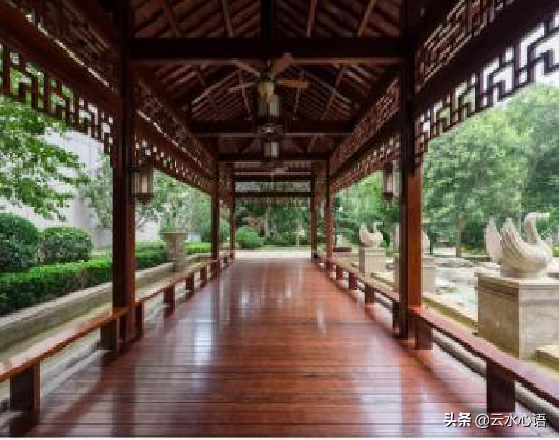Poetry creation needs passion, but also to have life accumulation, but also to pursue artistic conception and subtlety. The glory of Tang Dynasty poetry, although it could not be surpassed by later generations, also laid the foundation for the development of poetry after the Tang Dynasty. For example, Su Shi of the Northern Song Dynasty advocated liberal arts and nature and had a full posture. Ye Mengde also advocated that the relationship between the body and the body has its own nature. Yang Wanli of the Southern Song Dynasty is even more original and sincere, and his works are also fresh and interesting.
In fact, although these propositions are expressed differently, they are close to each other, and they are all deeply influenced by a talented man in the Tang Dynasty. This talent is the sikong tu who created the "Twenty-Four Poems", and he believes that literary works should tend to reflect life in multiple directions, but also to express emotions in detail. Caizi also put forward his own views on specific creations, which had a profound impact on future generations. The following is a masterpiece of Sikong Tu, which is very literary and more enlightening.

Reserved
Tang Dynasty: Sikong Tu
Without a word, do your best.
Words are not involved in difficulties, and they are no longer worried.
There is a real zai, with which it rises and falls.
If it is full of wine, it will return to autumn when it is spent.
Leisurely empty dust, suddenly the sea.
Shallow and deep gathering, take a harvest.
Sikong Tu was a poet and poet of the late Tang Dynasty, who was promoted to the rank of Jinshi in the tenth year of Emperor Yizong's Xiantong. Among his famous twenty-four poems, the "Implicit" chapter is one of the most passionate and literary chapters written by Sikong Tu.
He also tried his best to apply his "implicit" theory to poetry creation, such as the wind and lotus like drunkenness and flower dance, the sandbird mercilessly accompanied by guests, and the work was inexhaustible and impressive.
The opening paragraph is a programmatic theoretical judgment, "Without a word, you will get the flow." "Not to write a word is not to say that not a word is not used, but to not use words to express it explicitly. The author uses implicit words to summarize implicit products. To do your best is not to get the flow of the character, but to fully achieve the super ease and beauty. The flow of literary works refers to the super-elegant and wonderful style and style.
"Words are not difficult, and they are no longer worried" is a subtle commentary on the first sentence, which means that although the words do not mention the situation of suffering, they make people feel very sad when reading. Words do not involve difficulties, but do not write a word; they are overwhelmed with worries, just like they have done their best.
"There is a real zai, with which it sinks and falls", emphasizing that the work is consistent with the rationality of life, that there is a real reason for things, and that the work floats and breathes with it. What a writer writes must be reasonable in order to create a truly implicit style. Zhenzai, originally referring to the master of the universe, also refers to the nature of nature, and by extension, emotions and dispositions.
"If the wine is filtered, the flowers return to autumn", the poet believes that the implicit style is like when the wine is wet, the wine juice leaks endlessly; and it is like when the flowers bloom, they encounter the frost in the sky. This is the use of object metaphors to express the wonderful state of wine juice that should be possessed by the style of hanyu without exhaustion, and flowers blooming and wanting to fit together.
The last four sentences are a rigorous unity. "Leisurely empty dust, suddenly the sea", through an invisible red line, very naturally string together the whole text, and then get a fresh conclusion, "shallow and deep gathering, take a harvest." ”
The first two sentences are puns, referring to both social life and implicit style, like sand in the air and bubbles in the sea, floating and swimming, constantly changing, all need to be harvested and refined. The poet uses object images as metaphors to illustrate the typical method.
For example, Cen San's "Spring Dream", the cave house last night the spring breeze, the deceased is still across the Xiang River water. In the spring dream of the pillow piece, travel thousands of miles in Jiangnan. The author lyrically remembers the feelings of friends, does not use Bixing but uses white painting, and its typical kung fu of taking everything is amazing. The poet does not know how to miss it, but through the pole writing of spring dreams on the pillow, the film is thousands of miles, showing a long and lingering deep friendship, which can be described as a full flow.
Sikong Tu advocated that poetry should express the purpose of taste, intending to show that his poetic aesthetic ideals were not to explore implicit styles. Before Sikong Tu, the famous scholar Liu Xun advocated this literary realm, and he believed that deep words and implicit literary style were euphemistically hidden in the aftertaste. It can be vaguely seen from this that Sikong Tu inherits the vein of traditional aesthetics.